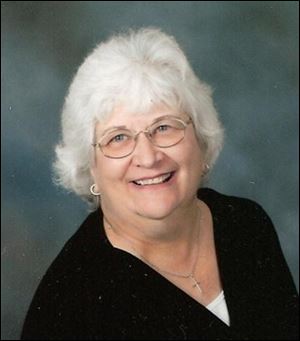
Aprons are the fabric of history and home
Michigan woman shares the fascinating evolution of this hard-working item
3/15/2015Today, aprons fetch top coin at estate sales, antique shops, and various online bid ’em up sites.
What exactly, though, is being purchased?
Someone once said, “Our most treasured family heirlooms are our sweet family memories.” The apron memory is one of those heirlooms. And you really cannot put a price on those memories.
You can, though, put a price on aprons, and those prices vary widely.
RELATED: Aprons provide ties that bind
Certainly some common aprons, showing much wear and tear and perhaps gravy stains, can be had for a couple of bucks, but the oh-so-splendid hostess aprons, or the peek-a-boo flouncy, flirty aprons will cost much more, depending on the designer, the age and condition of the fabric, and other variables.

Carol Brodbeck.
Carol Brodbeck, of Ypsilanti, Mich., said the apron trend today shows the interest many people have in connecting to fond memories of the past. She grew up in Monroe County, where she went to a one-room country school.
“I came from Ottawa Lake, Michigan. Down there, for the ladies, my gramma, my mother, an apron was part of their daily dress. Aprons represent a lot to me.”
Some years ago, she was asked if she could give a talk on aprons for a local church group. After researching the topic, she found it most interesting and it brought back many pleasant memories from her childhood. She got hooked, and has been presenting “Apron Artistry — Apron Ties Past to Present” to a variety of audiences, including many across southeastern Michigan.
She is intrigued by what she calls apron artistry, aprons as fine art. “You could have the same-looking apron on the surface, but every stitch is different.”
Aprons trace back centuries, including to the Stone Age where plant fabric was used as aprons, “and the earliest genesis is in the Holy Bible when Adam and Eve put on fig leaves,” she said.
Aprons were worn by fertility goddesses, high priests, and Roman soldiers, she said, and craftsmen have worn aprons for centuries.
Colors of aprons varied by trade.
“Gardeners, spinners, weavers, and garbage men always wore blue aprons. I do not know why, but it was part of the whole hierarchy of class.”
Fishermen would wear oil-skin aprons, blacksmiths wore leather aprons, bakers wore white, butchers wore blue stripes, butlers wore green, English barbers wore checkered aprons, and stone masons wore white to blend with their trade, Mrs. Brodbeck said.
For many years, women wore aprons to protect their clothing while they tilled the soil, milked cows, scaled fish, baked bread, brewed ale, and tackled other tasks. In an understatement, she said “They had a lot of work to do.”
“In the 17th, 18th, and 19th century, nearly every woman owned at least one apron,” she said.
In the 1800s, she said, the invention of the sewing machine revolutionized the making of clothing, and then textile mills were built, making bolts of material for aprons readily available.
Checkered gingham became more common, as did design work called chicken scratch. Then aprons evolved, taking on the personalities of the women who made them, either by hand or on their new sewing machines. Cross stitch, smocking, and rickrack decorated pockets and apron edges.
“Much of the fancy work was quite lovely,” she said, and aprons, those with lace on silks, became quite the fashion statement, stylish garb worn atop evening gowns. In recent years, the apron’s popularity has prompted some teens to top their prom gowns with aprons.
A resurgence in the use of aprons took place after World War II when fathers and brothers came home. “Families reunited. Being together was appreciated. Home was central to families again. Women took great pride in their home. The apron revival today is a symbol of this unity. Whenever women are central to the home, those aprons come back out,” she said.
Since 2010, aprons have been billboards of a society seeking stability in the home, she said.
“I think that is what is going on. What we want now are the better days in the home, days when mom was there and provided stability in the family. I think that is going on. A number of us want to sit down and tell her what this piece of fabric means.”